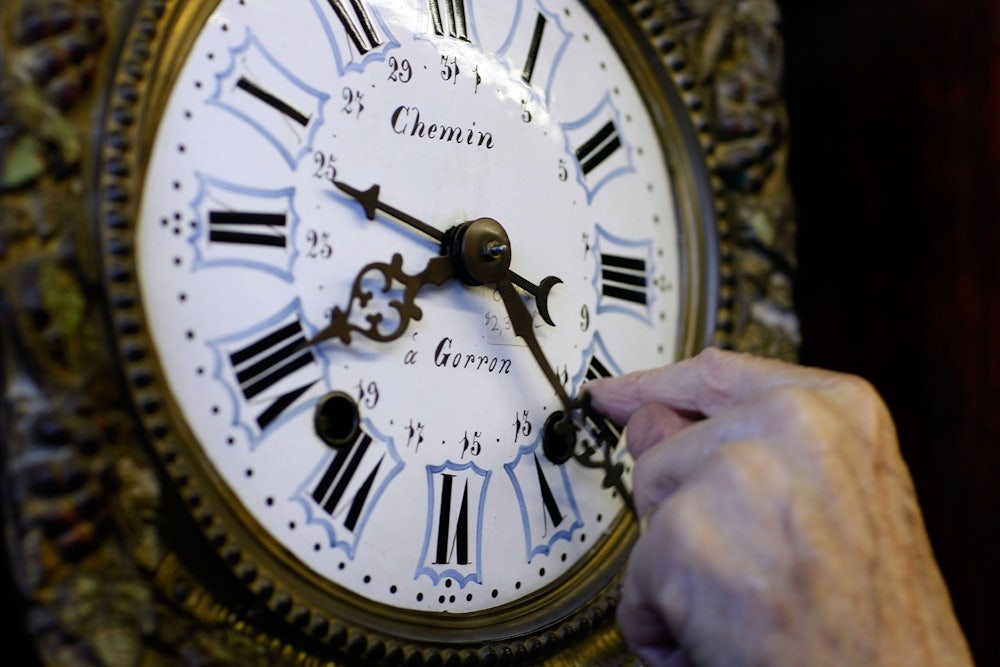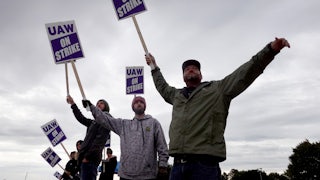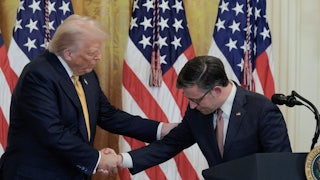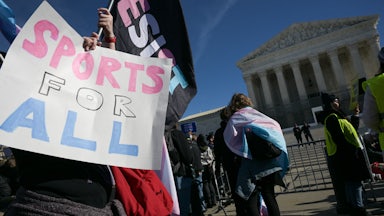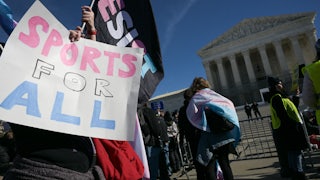Tuesday is Election Day, and we want turnout to be big. Early signs suggest it will be in Virginia, where Democrat Terry McAuliffe is neck and neck with Republican Glenn Youngkin in a race for governor that’s seen as a bellwether (mistakenly, my colleague Alex Shephard has argued) for the 2022 midterms.
The topic of ballot access has occasioned much heated debate in recent years, but one modest apolitical remedy—irrelevant to this year’s contests but highly relevant most years—deserves more attention. The remedy I have in mind is modest in the sense that its impact on voter turnout would be about equal to whether there’s a gubernatorial race on the ballot—that is, not earth-shattering but significant enough to warrant attention. (Gubernatorial election turnout is typically higher than primary or local election turnout but lower than presidential election turnout.) My proposed remedy is apolitical in the sense that it isn’t clear whether Democrats or Republicans would benefit more, though I’d be disingenuous not to acknowledge that most expansions in ballot access favor Democrats, at least modestly. That’s why the GOP is the party of voter suppression.
The remedy has to do with daylight saving time, which this year will end when the clock ticks 2 a.m. on Sunday, November 7.
Rest assured that I am not about to plunge you into the bitterly divisive question of whether the United States should have daylight saving time year-round, as we did in 1973 to 1975, or eliminate it altogether. Rather, I’m going to propose that the changeover to standard time be moved back from the first Sunday in November to the last Sunday in October, where it resided for three decades prior to 2007.
This change was enacted as part of the Energy Policy Act of 2005, with the idea that adding an extra week of daylight saving time would save energy. But it’s never been clear that daylight saving time actually does save energy. The real reason DST was extended was that the candy lobby wanted it. As my college classmate Michael Downing, a novelist and lecturer at Tufts who died too young this past February, explained in his 2005 book, Spring Forward: The Annual Madness of Daylight Savings Time, an extra week of late-afternoon daylight meant an extra hour of daylight trick-or-treating on Halloween. Ka-ching!
You’d think that an extra week of late-afternoon daylight, by translating into an extra hour for daylight voting, would expand turnout. But it doesn’t, according to a 2014 paper by Robert Urbatsch, a political scientist at Iowa State University. The reason it doesn’t is that when Election Day falls within two days of the changeover to standard time—it doesn’t this year, but it does most years—then some significant minority of people will feel too cranky from the alarm going off one hour later than usual to march down to a polling place.*
Time changeovers really mess with people’s heads. I feel it more in the spring, when I wake up the second Sunday of every March in a mild panic that I’ve fallen one hour behind. On the first Sunday of every November, I usually feel quite pleased to have an extra hour added to my day. But as Fats Domino noted, nobody likes Monday, and it’s disorienting when your alarm clock wakes you at what feels like 8 a.m. but is really 7. Because our circadian rhythms take up to a week to adjust, Tuesday is a little disorienting, too. Cognition, motor skills, and decision-making are all impaired. It’s been documented that during the first few days after a shift to standard time, there are more traffic accidents (hard cheese for those trick-or-treaters), more workplace accidents, more stock market volatility, and possibly more heart attacks.
Again, these calamities won’t befall Tuesday’s election, because November started, this year, on a Monday. In years when November begins on a Monday, the switch to standard time gets pushed five days past the election. For better or worse, potential voters will feel a bit clearer-headed this year than usual.
But November hasn’t started on a Monday since 2010, and it won’t start on a Monday again until 2027. Back when the changeover was the last Sunday in October, the opposite pattern held: Election Days came 48 hours after circadian-rhythm disruptions only when November started on a Monday, as occurred in 1999, 2004, and 2010 (when it no longer mattered because daylight saving had already been pushed back).
The oddities of the Gregorian calendar allowed Urbatsch to compare turnout when elections occur two days after the standard time changeover (that is, most years) to turnout when elections occur five days before (this year, but not most years). He found that turnout was 2.63 percent higher in years like this one. By comparison, Senate races boosted turnout 1.04 percent, gubernatorial races boosted turnout 2.77 percent, and presidential elections boosted turnout 15.85 percent. (Urbatsch’s calculations excluded Indiana, which straddles the Eastern and Central time zones and consequently has a very complicated relationship with time.)
Perhaps you’re thinking getting more people to the polls would have helped Donald Trump in 2016, given that Biden voters were nearly twice as likely as Trump voters to vote by mail. But that’s because Trump very foolishly told his voters not to vote by mail, and most of them didn’t. That may have cost Trump the election, because voters over age 65—a key Trump constituency—voted predominantly by mail. They went for Trump 52–47 percent. That margin would have been bigger if Trump had supported voting by mail.
Of course, whether there’s a partisan advantage either way is ultimately beside the point. More people voting is always better. And more people would vote if we moved the changeover to standard time back to the last Sunday in October. Alternatively, we could stay on daylight saving time or eliminate it and be on standard time all year round. But I don’t want to start up that fight again.
* This article originally misstated the direction of the time-switch. Additionally, an earlier version of this piece gave the percentage of eligible voters, when the relevant statistic is the percentage of the voting-age population.
